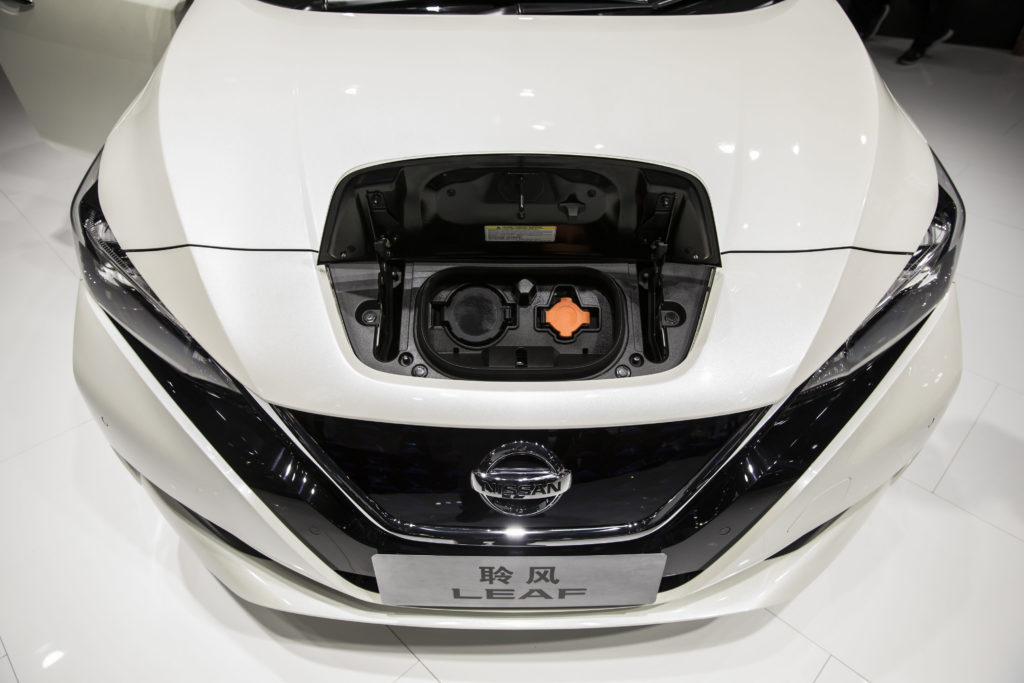
The century-long dominance of gasoline-engine cars will sputter in coming decades as incentivized Chinese buyers and more-efficient manufacturers combine to put electric vehicles atop the sales leader board.
By 2040, more than half of all new car sales and a third of the planet’s automobile fleet — equal to 559 million vehicles — will be electric, according to a global outlook published Monday by Bloomberg New Energy Finance. EVs will achieve upfront cost parity with internal-combustion engines beginning in the mid-2020s, helping trigger a tectonic shift in car sales.
General Motors Co., Toyota Motor Corp., BYD Co. and Volkswagen AG are pouring billions of dollars into new-energy vehicles to compete with Tesla Inc., with its Model 3 poised to overtake Nissan Motor Co.’s Leaf as the world’s most-popular EV model. China, already the biggest global market for EVs, will maintain that momentum as policy makers in Beijing push for alternative-fuel vehicles and consider banning gas guzzlers.
“China will continue to be the pivotal factor that drives the fast popularization of electric vehicles globally,’’ said Nannan Kou, a senior associate at BNEF in Beijing and an author of the forecast. “China’s EV policies are reshaping the corporate strategies of global carmakers such as Toyota and helping its battery makers get into the supply chain for global automakers.’’
China sold 72,000 passenger EVs in April – a 136 percent increase from a year earlier, according to a separate BNEF report Monday. By comparison, U.S. EV sales were 19,700.
To read a QuickTake on electric vehicles, click here.
Buyers will switch to long-range EVs en masse once they are shown to be cheaper, both in terms of upfront purchase costs and the total expense of ownership. Global market for light-duty EVs –- which include passenger cars — will increase from about 1 million units last year to 60 million units by 2040, with growth rates beginning to accelerate in the next seven years, according to BNEF.
The U.S. has been relatively slow to embrace the shift as battery-powered vehicles comprised just 1.1 percent of new car sales last year. That’s poised for change after automakers announced at least 60 more EV models for release between now and 2022, with GM and Volkswagen promising the most.
American consumers, who could choose from 38 battery-powered models at the end of last year, could select from 100 by the end of 2022. Increased choice will help more than double EV sales to 853,000 by 2022, equal to about 5 percent of U.S. light-vehicle sales.
European EV sales are increasing quickly, driven by national subsidies, tightening fuel-economy regulations, more models and increasing concerns about urban air quality. The continent is set to become the No. 2 EV market as last year’s sales could more than triple to 860,000 by 2022, representing 5 percent of all new car sales.
Three-fifths of that demand will be coming from France, the U.K. and Germany.
EV demand in China is to rise faster and further than previous projections, reaching 19 percent of its total vehicle sales by 2025 and 60 percent by 2040.
Chinese buyers are swayed by price subsidies for EVs, expensive auctions for license plates for gas-powered cars and restrictions in at least six cities on how many gas-powered cars can be on roads.
“China is pursuing EVs not just to reduce oil imports and improve urban air quality, but also for industrial policy reasons as it looks to create a globally competitive automotive and battery industry,’’ the report said.
The BNEF report also said:
Nissan’s Leaf is the all-time best-selling EV, followed by the Tesla Model S. Beijing Automotive Group Co.’s BAIC EC180 was the bestselling battery-powered vehicle last year with sales of 78,000 units. Tesla is expected to overtake Nissan in 2018 as Model 3s start to be delivered. Warren Buffett-backed BYD leads all automakers in cumulative EV sales. Tesla dominates the U.S. battery vehicle market, cornering almost half of all sales. There is limited leeway for Tesla to push its production targets further back, given its significant cash burn and investor expectations. The launch of the new Toyota Prius Prime and Nissan Leaf resulted in EV sales more than doubling last year to about 50,000 units, or almost 1 percent of annual vehicle sales in Japan. This was achieved despite lower purchase subsidies, showing growing consumer demand. By 2025, the major Japanese automakers say they will have launched EVs to compete with foreign makers such as Volkswagen, BMW AG, Tesla and Daimler AG — prompting BNEF to raise its 2030 sales forecast for Japan by 50 percent compared with last year’s forecast.
Recommended for you
